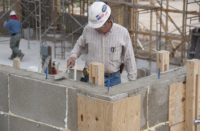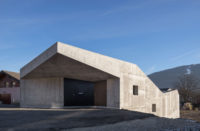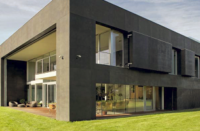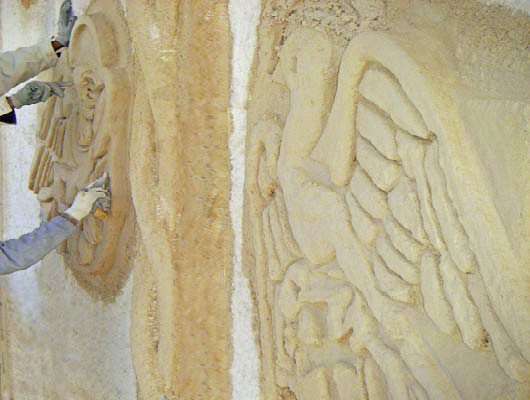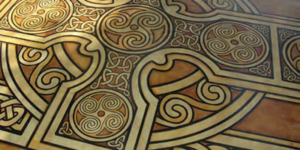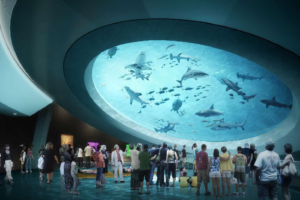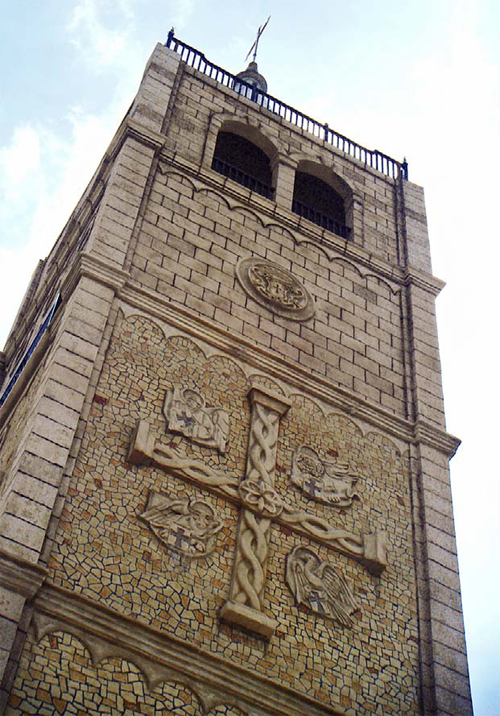 Bruce Williamson, of Carrollton, Texas, and a team from French manufacturer Decopierre used a unique limestone veneer to give this bell tower a historic look.
Bruce Williamson, of Carrollton, Texas, and a team from French manufacturer Decopierre used a unique limestone veneer to give this bell tower a historic look.
The tower is the centerpiece of Adriatica, a new residential development in McKinney, Texas, built to look like a 15th century seaside Croatian village. The 128-foot structure is modeled after one in Supetar, Croatia, and has three working bells.
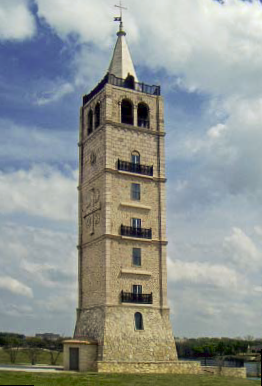 Decopierre of North Texas LLC, based in Addison, Texas, was commissioned by Adriatica developer Blackard Group to coat the tower with the veneer, made from natural limestone mined at two quarries in France. Williamson is creative director for Decodesign, a creative division of the French company’s American operations.
Decopierre of North Texas LLC, based in Addison, Texas, was commissioned by Adriatica developer Blackard Group to coat the tower with the veneer, made from natural limestone mined at two quarries in France. Williamson is creative director for Decodesign, a creative division of the French company’s American operations.
“Veneer is almost not a term I would use – it’s blown stone,” Williamson says, noting that the material is shot in thicknesses of 3/4 inch to 1 inch. “You touch it, it feels solid and cool to the touch. It’s lightweight, and it allows for a dome or vaulted ceiling over sheetrock or plywood.”
The first 10 feet of the tower is real stone, but the Decopierre crew coated it with limestone the rest of the way up. Applied with a hopper gun, the veneer goes up quickly. “A two-man crew can start-to-finish 200 square feet a day,” Williamson says.
The limestone was tinted with Decopierre’s water-based Olive pigment, among other colors. The pigment was sprayed onto the limestone coating while it was still wet, allowing the tints to soak in. For one side of the tower, Williamson designed reliefs of a “great seal” and an 18-by-18 cross flanked by symbols representing the four gospels of the Bible. All were inspired by decorative flourishes common to 15th century Croatia. “The designs are a little rough and primitive, and that’s exactly what they wanted,” he says.
Williamson carved the reliefs in his studio out of architectural foam using an electric kitchen knife, then coated them with primer. He installed the pieces on the tower and covered them with limestone veneer in three days. “You can tell everybody I did all the work with one hand because I wouldn’t let go of the scaffold,” he jokes.
www.decopierre.net
